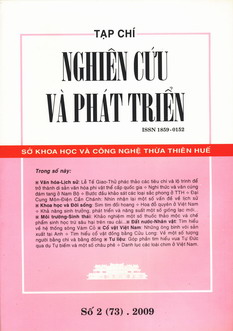Những ông bình vôi sản xuất tại Anh/British-Made Lime-Pots for Việt Nam
Tóm tắt
Ông bình vôi Việt Nam hoàn toàn khác những đồ đựng vôi ăn trầu của các nước láng giềng. Ông bình vôi được sản xuất và sử dụng tại chỗ. Nhưng từ cuối thế kỷ 18 ông bình vôi cũng có thể được đặt để sản xuất tại Trung Quốc. Thông tin về 5 ông bình vôi sản xuất tại Anh đã được thu thập và so sánh. Hai ông đang bị thất lạc. Ba ông còn lại đã được đo đếm và khảo tả. Những ông này đều có quai vững chãi hình cung, tai quai lớn, cong, thân bình hình cầu, miệng bình nhỏ, tròn vo, chân đế đặc. Minh văn có các chữ Copeland & Garrett, hình vương miện và những chữ chỉ nguyên liệu (New Fayence) hoặc màu men (Saxon Blue). Thai cốt trắng, men sứ trắng với trang trí hoa lá sặc sỡ, vẽ tỷ mỷ theo khuynh hướng tả thực. Rất có thể năm ông này được sản xuất từng ông một theo hai nguyên mẫu Trung Quốc, tại lò gốm Spode tại Stoke-on-Trent trong các năm từ 1840 đến chậm nhất là 1847.
ABSTRACT
Betel chewing is a time-honoured custom in Vietnam. The lime-pot is the crucial component of the betel service used by betel chewers. Vietnamese lime-pots do not resemble the lime containers used in neighbouring countries; they are unique in materials, dimensions, and shape, in decorative styles, motifs, and materials, and in inscriptions. The utmost of lime-pots were produced and used locally but from the late 18th century, lime-pots were commissioned in China, too. Five British-made lime-pots are inventoried, among them two are missing; the three others are in Huế Museum of Royal Antiquities, Vietnam History Museum (HCM city) and in Trần Đình Sơn Collection (HCM city). These artefacts share the same circle-shaped handle, prominent curve ears, sharp nipple, globe-shaped body, round and small spatula-hole, polychrome realistic summer flowers decoration and filled-up base. The inscription on some pot’s bottom reads Copeland & Garrett and New Fayence or Saxon Blue... They are supposedly produced upon, at least, two Chinese prototypes, between 1840 and 1847 in Spode Potteries, Stoke-on-Trent, UK.

